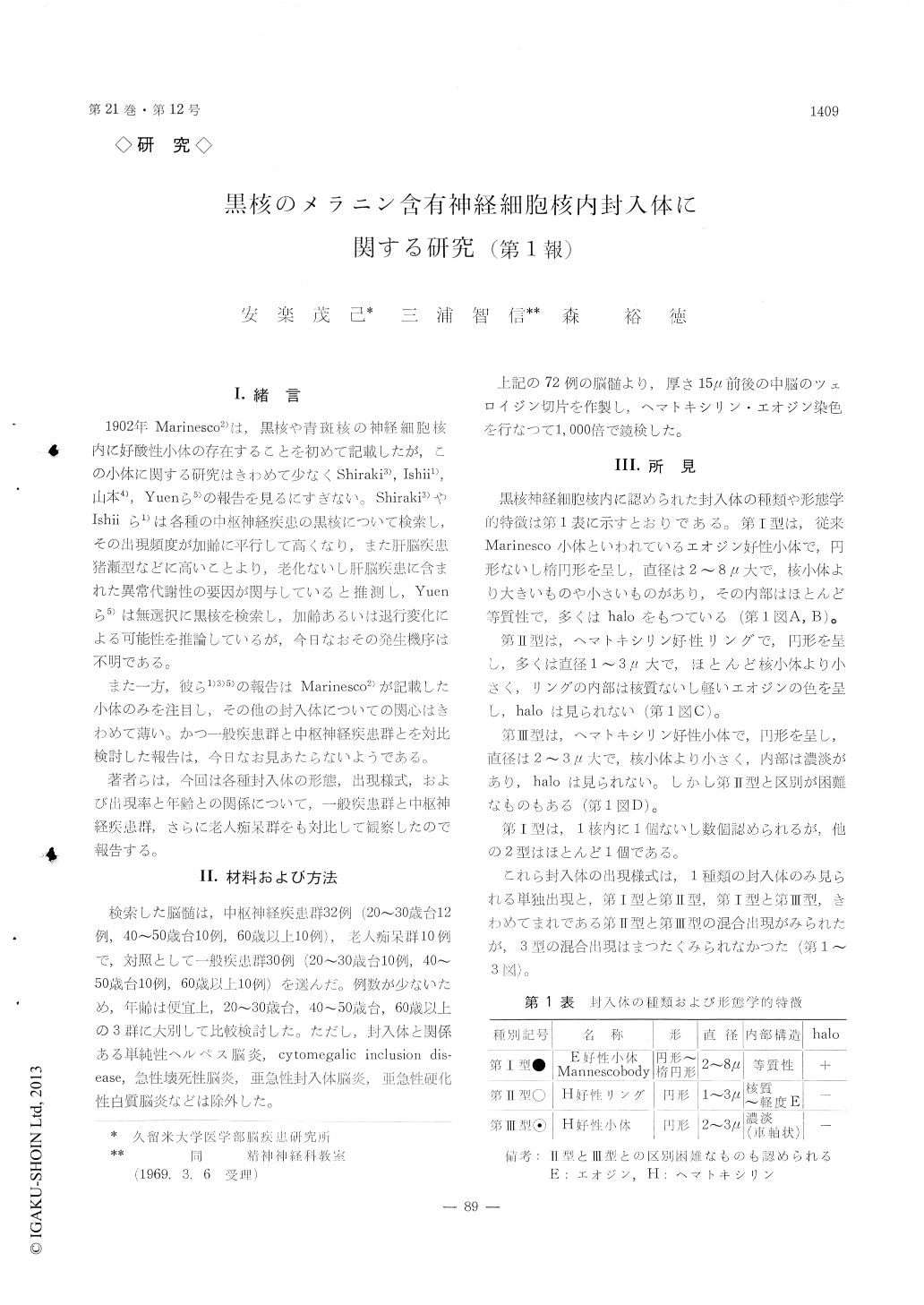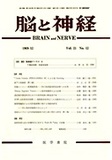Japanese
English
- 有料閲覧
- Abstract 文献概要
- 1ページ目 Look Inside
I.緒言
1902年Marillesco2)は,黒核や青斑核の神経細胞核内に好酸性小体の存在することを初めて記載したが,この小体に関する研究はきわめて少なくShiraki3), Ishii1),山本4),Yuenら5)の報告を見るにすぎない。Shiraki3)やIshiiら1)は各種の中枢神経疾患の黒核について検索し,その出現頻度が加齢に平行して高くなり,また肝脳疾患猪瀬型などに高いことより,老化ないし肝脳疾患に含まれた異常代謝性の要因が関与していると推測し,Yuenら5)は無選択に黒核を検索し,加齢あるいは退行変化による可能性を推論しているが,今日なおその発生機序は不明である。
また一方,彼ら1)3)5)の報告はMarillesco2)が記載した小体のみを注目し,その他の封入体についての関心はきわめて薄い。かつ一般疾患群と中枢神経疾患群とを対比検討した報告は,今日なお見あたらないようである。
Thirty-two cases of various diseases of the central nervous system exclusive of encephalitis thought to have some connection with the inclusions, 30 cases of the general diseases as controls (divided into 3 age groups of twenties-thirties, forties-fifties, and over sixties) and 10 cases of senile dementia were examined microscopically on hematoxylin-eosin stain-ed specimens of celloidin sections.
The results obtained were as follows :
1) As inclusions eosinophil bodies, hematoxyl-inophil rings and hematoxylinophil bodies were found, and they were named type I, II, and III, res-pectively.
2) They appeared in any case either separately or in a mixed form, but there was no mixed appe-arance of all the three types. A mixed appearance of types II and III was very rare.
3) Regarding the frequency of each type, type I was most frequent both in the group of central nervous system diseases and controls. Its frequency was two or three time as high as that of types II and III, and the group of controls presented the highest percentage in frequency in each type.
4) With regard to the frequency of appearance by age group, it was extremely low in the group of twenties and thirties, but it rose abruptly in that of forties and fifties. In the age group of over 60 years, a tendency of decrease was noted in each type except for type I of controls, which was especially remarkable in type III.
5) Although the group of senile dementia showed a higher percentage in frequency in each type than the group of central nervous system diseases of over 60 years of age, there was no much difference in comparison with controls of forties-fiftes and over 60 years.
From this it may be assumed that, although the age factor cannot be denied in each type, other factors must be involved in these phenomena. There seems to exist no special relation with dementia.

Copyright © 1969, Igaku-Shoin Ltd. All rights reserved.


